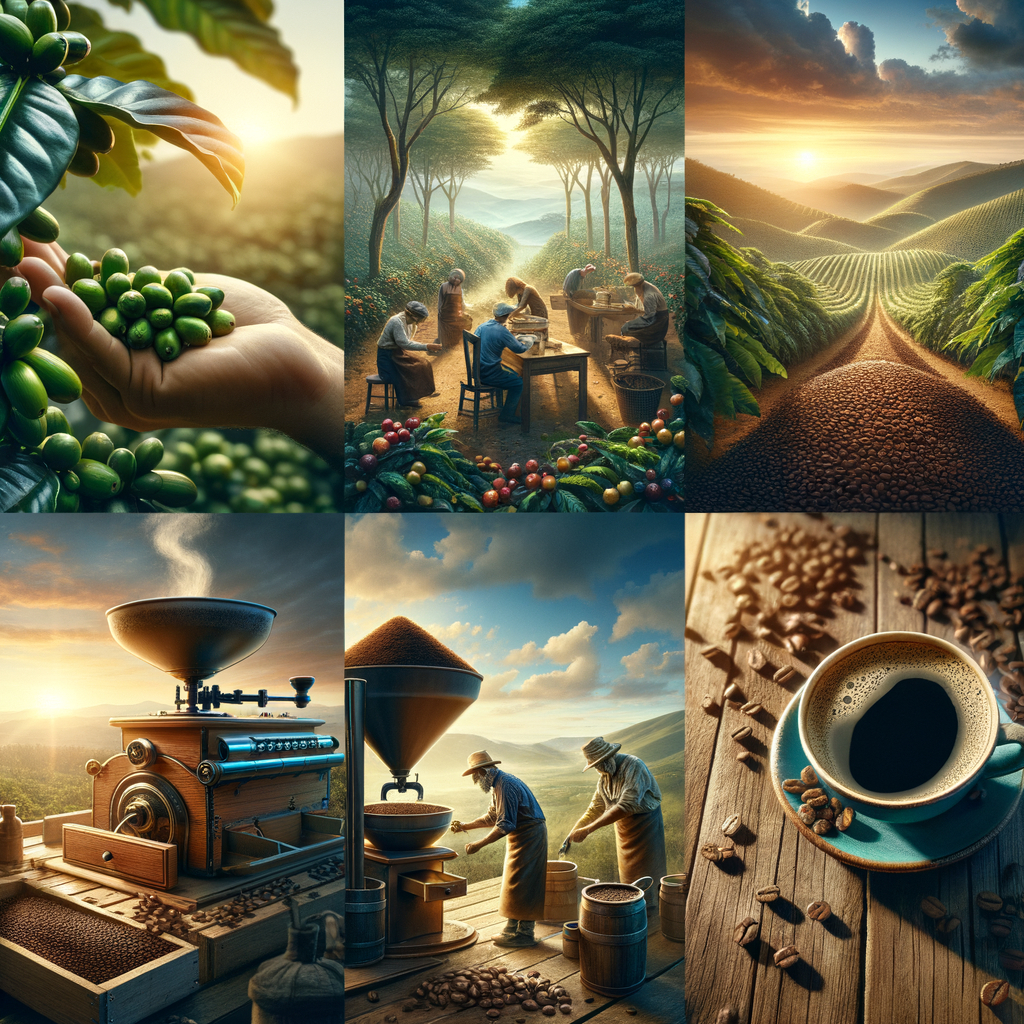Physical Address
304 North Cardinal St.
Dorchester Center, MA 02124
Physical Address
304 North Cardinal St.
Dorchester Center, MA 02124

Each morning, millions of people worldwide start their day with a freshly brewed cup of coffee. This beloved beverage is more than just a caffeine fix; it’s a ritual, a comfort and for some, even an obsession. But have you ever paused to consider the journey your coffee takes from bean to cup? Let’s dive into the fascinating process that brings this universally adored drink to your table.
Coffee originates from Ethiopia where it was first discovered in the 11th century. The story goes that a goat herder named Kaldi noticed his goats became energetic after eating certain red berries. He shared this discovery with local monks who used it to stay awake during long prayer sessions. Thus, the popularity of coffee began.
The cultivation process commences with planting coffee seeds in large beds in shaded nurseries. After sprouting, the seedlings are moved into individual pots where they are meticulously cared for until they’re ready for planting out in the field – usually within six months to a year.
The coffee plants require constant attention and care, including regular watering and protection from pests and diseases. They start bearing fruit after three to four years, producing cherries which turn from green to bright red when ripe – indicating they’re ready for harvesting.
Harvesting is often done by hand due to the delicate nature of coffee cherries. In countries like Brazil and Vietnam where large-scale plantations exist, mechanised harvesters are used. Once harvested, the cherries undergo processing either through dry method (sun-drying) or wet method (fermenting and washing).
In the dry method, cherries are spread out in the sun to dry for up to four weeks. In the wet method, the pulp of the cherry is removed and the beans are left to ferment in water-filled tanks. After fermentation, they’re rinsed and dried.
This is where coffee starts to look and smell like the familiar product we know. Roasting transforms green coffee beans into brown ones, bringing out their aroma and flavour. The degree of roasting determines the taste – light roast for more acidic and complex flavours, medium roast for balanced flavour, body and acidity, and dark roast for bolder, fuller-bodied taste with less acidity.
After roasting comes grinding which breaks down coffee beans into smaller particles. The grind size affects the extraction rate during brewing – a finer grind results in a stronger cup of coffee while a coarser grind makes a lighter one.
The final step is brewing where hot water extracts flavours from ground coffee. There are many ways to brew coffee including drip brewing, French press, espresso machine or pour over methods each imparting its unique character to your cup of joe.
The journey from bean to cup is an intricate process that involves numerous people – farmers, pickers, processors, roasters and baristas – all working meticulously to ensure you get your perfect cup of morning bliss. So next time you sip on your favourite brew, take a moment to appreciate this remarkable journey that spans continents and cultures.